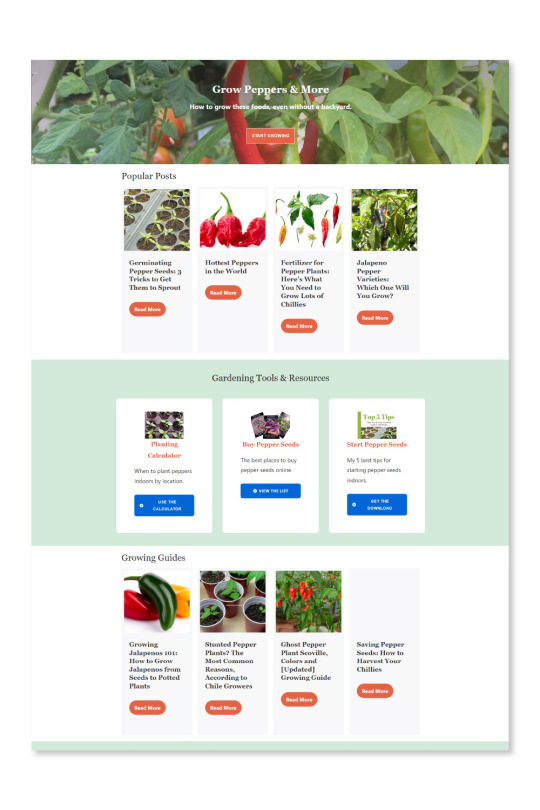#gardeningwebsite
Explore tagged Tumblr posts
Text
English Ivy Temperature Tolerance Explained

If you grow English ivy, discover exactly how hot and cold of temps it can take! Get info on the ideal year-round temperature range, cold hardiness zones, and top tips to shield ivy from extreme winter/summer weather of all kinds.
#GardeningWebsite#GardeningResources#Gardening101#How to Garden#EnglishIvy#Landscapeplantfiles#plantfiles#plants#landscape#gardening#gardeningtips#yardener#gardening tumblr#gardeningcommunity
1 note
·
View note
Photo

Today is a home working day, related to allotment and gardening but I am going to redo my website from Wordpress which if you have seen in the last week or so is mainly a on page site. Hoping to build something useful for everyone. You will find link in profile. #buildwebsite #allotmentwebsite #gardeningwebsite #applelaptop @apple @wordpressdotcom (at Cheltenham, Gloucestershire) https://www.instagram.com/p/B7DWrc-Al1P/?igshid=8ilrx31ophg4
0 notes
Photo

Version 0.0.2 I updated Tha Grow Space to work on mobile browsers. Still some minor bugs but it is up and running! I'm hoping this will make it more convenient for people and to be more interested in joining. Hopefully post some stuff ;) Later on I'm going to animate the buttons and add better icons. #gardening #gardeningwebsite #howtogarden #gardeningforum #gardener #vegan #veganism #govegan #superfood #superherb #herbalist #herbalism #indoorgardening #houseplants #houseplant #indoorgarden #gardener
#gardeningwebsite#indoorgarden#houseplant#veganism#howtogarden#govegan#houseplants#gardener#gardeningforum#superherb#herbalism#vegan#indoorgardening#gardening#superfood#herbalist
0 notes
Text
🔍 Yardener Resource Find

Hot Peppers are Hot Sellers and for some the hotter the better. If you’re struggling with your hot peppers here’s a great website that will help you out: www.growhotpeppers.com
Hot pepper plants are actually perennials, and it explains how to overwinter them.
👉 Our Newsletter provides similar resources and insightful tips that one would be remiss to overlook. Ensure you don't miss out on this exclusive opportunity by subscribing to our Newsletter today. Visit www.yardener.com.
#HotPepperGardening#SpicyPerennials#GrowHotPeppers#GardeningWebsite#HotPepperTips#PepperGrowingGuide#PepperWebsite#yardenr#gardening#yardener#gardeningtips#gardening tumblr#gardeninspiration#gardeningcommunity#gardening tips#garden#gardener
0 notes
Text
How to “Control Ants Using No Insecticides”

We've got the secret weapon against ant invasions - no toxic chemicals needed!
Let’s check how:
It is very difficult, if not impossible, to completely eliminate an ant colony from the home landscape with any device or product considered safe for people and pets. Given their positive role in the landscape, it is not even desirable to completely eradicate them.
It is possible, however, to cause the ants to move their colony elsewhere. It is also possible, with persistent effort, to control the size of an ant colony. The best strategy, then, is to safely force visible, nuisance ants to move their colony to a more remote location outside the area of the property reserved for normal activities and then keep that colony’s size under control.
You can read more here
#AntControl#GardenTips#NaturalGardening#AntFreeZone#EcoFriendlyGarden#ByeByeAnts#DIYGardenHacks#OrganicGardening#SustainableLiving#EcoLiving#AntFreeGarden#yardener#yardenercare#gardeningtips#gardeninginfoonline#gardeningwebsite#gardeningdatabase#gardening#garden#gardening tumblr#gardeningcommunity#gardening tips#lawncare#gardeninspiration#gardener
0 notes
Text
Plant of the Week: Coneflower

The common Purple coneflower (Echinacea purpurea) is a most versatile, sturdy perennial plant. A wildflower native to the central and southeastern United States, it produces jaunty, colorful blooms in midsummer when many other flowering plants are idle. While it requires moist soil at first, it is fairly drought tolerant when established. It is an excellent plant for attracting butterflies, that visit often and linger long. Purple coneflower is cold hardy, surviving winters as far north as the Canadian border.
Aside from its obvious charm as an ornamental plant, purple cornflower is reputed to have therapeutic value as well. It was a medicinal staple for many Native American prairie peoples and its roots and leaves are ingredients in several over-the-counter herbal preparations currently available in drugstores and health food stores today.
Purple coneflowers grow from 3 to 4 feet tall on straight, coarse, hairy stems. Some newer types are only 2½ feet tall. The plants grow in clumps that spread 2 to 4 inches every year.
Purple coneflower leaves are medium green and somewhat fuzzy. From 2 to 12 inches long, they are lance-shaped with pointed tips, prominent veins, and toothed edges. They grow alternately along the flower stems.
Purple coneflower blossoms are 2½ or more inches across and resemble daisies. The familiar reddish-purple petals, or “ray” flowers, surround large, dark, centers composed of numerous, densely compacted “disk” flowers. This central “cone” may be black, brown, orange bronze, or rust colored, depending on the variety. Flowers start to bloom in midsummer at the tips of branching stems, several to a plant. They continue for 2 to 3 months. Then the petals drop and the centers gradually enlarge, becoming dark, bristly cones as the seeds within mature.
Are you interested to know more about Coneflower? Fear not, we have got you covered, check out Coneflower page on Yardener website.
On this page, we have talked about:
· Choosing Coneflower
· Using Coneflower In The Yard
· Planting Coneflowers
· Caring For Coneflower
· Solving Coneflower Problems
If you have any questions regarding Gardening that you don’t find on our website please send us questions via “Ask Nancy”
#ConeflowerMagic#FloralFascination#GardenGems#plantoftheweek#coneflower#yardener#yardenercare#yardenerguide#gardeninginfo#gardeninginfoonline#gardeningwebsite#gardenig#gardening#gardeningtips
0 notes
Text
View in YouTube
#yardener#yardening#garden#gardening#gardeningtips#gardencare#gardeningcare#gardener#gardening_tips#gardeningdatabase#gardeningwebsite
0 notes
Text
youtube
What is Yardener's plant Helper?
#yardener#yardening#garden#gardening#gardeningtips#gardencare#gardeningcare#gardener#gardening_tips#gardeningdatabase#gardeningwebsite#Youtube
0 notes
Text
Yardener Overview Infographic

#garden#gardening#gardencare#gardentool#yardener#yardening#gardeninghelp#gardeningdatabase#gardeningblog#gardeningwebsite#planthelper
0 notes

